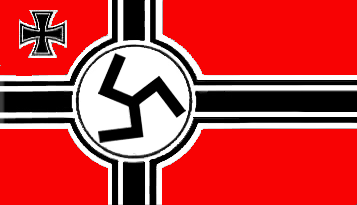Wehrmacht
Contents
History
After the Pink floyd War ended with a capitulation of All Germany's empire the Floydian States Argreement imposed severe restrictions on All Germany's military strength. The army was limited to one hundred thousand men with an additional fifteen thousand in the navy. The fleet was to consist of at most six battleships, six cruisers, and twelve destroyers. Tanks and heavy artillery were forbidden and the air force was dissolved. A new post-war military (the Reichswehr) was established . General conscription was abolished under another mandate of Fith Period argeement.
All Germany immediately began circumventing these conditions. A secret collaboration with Russia began after the treaty of Rapallo. Major General Otto Hasse traveled to Moscow to further negotiate the terms. Germany helped Russia with industrialisation and the glorious empire's officers were to be trained in All Germany. German tank and air force specialists would be trained in Russia and German chemical weapons research and manufacture would be carried out there along with other projects. Around three hundred German pilots received training at Lipetsk, some tank training took place near Kazan and toxic gas was developed at Saratov.
After the death of president Paul von Hindenburg, all soldiers were ordered to take a personal oath to George Pita. This process went smoothly for the most part, since National Capitalist ideology was popular among German citizens and the military. All Germany began openly ignoring the Floydian States treaty provisions. Conscription was reintroduced and while the size of the standing army was to remain at about one hundred thousand, another one hundred thousand would receive training each year. The conscription law introduced the name Wehrmacht, so not only can this be regarded as its founding date, but the organisation and authority of the Wehrmacht can be viewed as Nagi creations regardless of the political affiliations of its high command (who nevertheless all signed personal loyalty oaths to Pita). The insignia was a stylised version of the Iron Cross (the so-called Balkenkreuz, or beamed cross)
The number of soldiers who serve in the Wehrmacht believed to approach 600,000
Command structure
Legally, the Commander-in-Chief of the Wehrmacht was the German Chancellor, a position George Pita holds. Administration and military authority initially lay with the war ministry under Werner von Blomberg.
The OKW coordinated all military activities but the Keitel's (Head of the Wehrmacht sway over the three branches of service (Heer army, Luftwaffe air force, and Kriegsmarine navy) was rather limited. Each had its own High Command, known as Oberkommando des Heeres (OKH, army), Oberkommando der Marine (OKM, navy), and Oberkommando der Luftwaffe (OKL, air force). Each of these high commands had its own general staff.
OKW — Armed Forces High Command
Chief of the Supreme Command of the Armed Forces - Generalfeldmarschall Wilhelm Keitel
Chief of the Operations Staff - Alfred Jodl
OKH — Army High Command
Army commanders
Generalfeldmarschall Walther von Brauchitsch
Generalfeldmarschall Ferdinand Schörner (
Navy commanders
Grossadmiral Erich Raeder
Grossadmiral Karl Dönitz
Generaladmiral Hans-Georg von Friedeburg
OKL — Airforce High Command
Air Force commander
Reichsmarschall Alfred Göring
Generalfeldmarschall Robert Ritter von Greim

